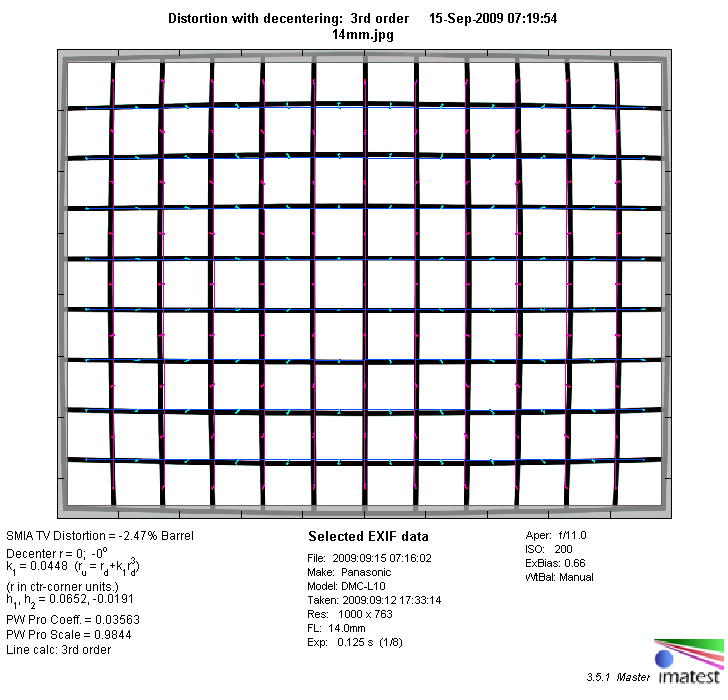|
Olympus Zuiko Digital 14-42mm f/3.5-5.6 ED - Review / Test Report - Analysis |
|
Lens Reviews -
(Micro-)Four-Thirds
|
|
Page 2 of 3

Distortion
The Zuiko produces barrel distortion throughout the range. As usual this is most obvious at 14mm but at around ~2.3% the problem is quite well controlled actually. At 25mm and 42mm the level of distortion is negligible in field conditions.
|
Move the mouse cursor over the focal length text marks below to observe the respective distortion
|
| 14mm |
25mm |
42mm |

|
Vignetting
The amount of vignetting is rather typical for such a standard zoom lens. At 14mm @ f/3.5 it is most pronounced at around ~0.9EV - this can be visible in critical situations. At other tested focal lengths and aperture settings the vignetting nothing to worry about out there.

MTF (resolution)
The resolution characteristic of the lens is a bit surprising upon first sight - reads: it's quite amazing with no real flaws throughout the range. The center resolution is generally excellent and the borders and even the extreme corners stay on a very good level. If you don't believe these findings feel free to check the sample image section. The reason behind this is actually quite simple: the lens has a rather moderate 3x zoom ratio combined with a very slow max. aperture - such lenses are actually quite easy to design. The Canon or Nikon 18-55mm variants provide a similar performance here.
Please note that four-thirds cameras have a different diffraction characteristic than APS-C or full format cameras. The real-world sweet spot, the point of highest resolution, is generally around f/4. Therefore it's hardly possible to improve the performance by stopping down when using (such) slow speed lenses. Remember that f/8 on a four-thirds camera is comparable to f/16 on a full format camera.
Please note that the MTF results are not directly comparable across the different systems!
Below is a simplified summary of the formal findings. The chart shows line widths per picture height (LW/PH) which can be taken as a measure for sharpness.
If you want to know more about the MTF50 figures you may check out the corresponding Imatest Explanations
Chromatic Aberrations (CAs)
Lateral chromatic aberration are quite well controlled averaging around 1px at the image borders throughout the range. You may spot some colored halos at times but it's generally not reaching disturbing levels.

|